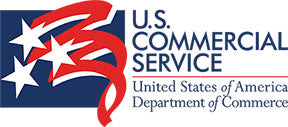How to Clean Preschool Toys

Even before the spread of the Coronavirus, it was important to wash and clean toys after play. Kids are constantly exploring, touching, licking, sharing, sneezing, drooling... You get the idea. Now, more than ever, it is best to keep play items in your home as clean as possible to eliminate potential sources of various illnesses that can spread to the whole family, and other children.
COVID, Respiratory Syncytial Virus (RSV), Seasonal Flu, and the common cold are often spread by touching contaminated surfaces such as toys and other kids products. After all as any parent knows - kids are a vector for illnesses.
Why to Clean Kids Toys
According to the Wall Street Journal, scientists suspect children could play a key role in transmitting Coronavirus and other seasonal illnesses. Reports have shown children can have active virus in their secretions for up to 22 days. So it’s vital to try to prevent them from getting sick and spreading it to others.
With COVID now endemic, it remains important to regularly clean toys to prevent the spread of seasonal respiratory illnesses such as COVID, Flu, RSV, and the common cold.
Here is how we recommend cleaning our toys and others in your home:
How to Clean Preschool Toys
Luke's Toy Factory trucks are sink washable using a solution of warm, soapy water (dish soap is great) and mild scrubbing with a brush. This will eliminate germs and dirt effectively.
We do NOT advise that you wash our toys in the dishwasher. The heating cycle can warp them, which will affect the way they fit together.
Another method which works well for our toys and others - both plastic and wood - is a solution of bleach and water used by many preschool teachers to clean multiple toys quickly. The solution kills 99% of germs on an object's surface.
To do this safely, mix ½ cup of bleach into a gallon of water in a bucket, and completely submerge the toys to make sure all surfaces have been soaked. Then rinse and air dry the toys on a clean towel. Do not leave toys in the bleach/water mixture for an extended period, as the bleach can discolor materials if left in for too long. Wear gloves if your hands are sensitive to bleach, and use no more than ½ cup per gallon of water.
We have tested both methods and have found no problems with either one. Now back to the important part... play!



